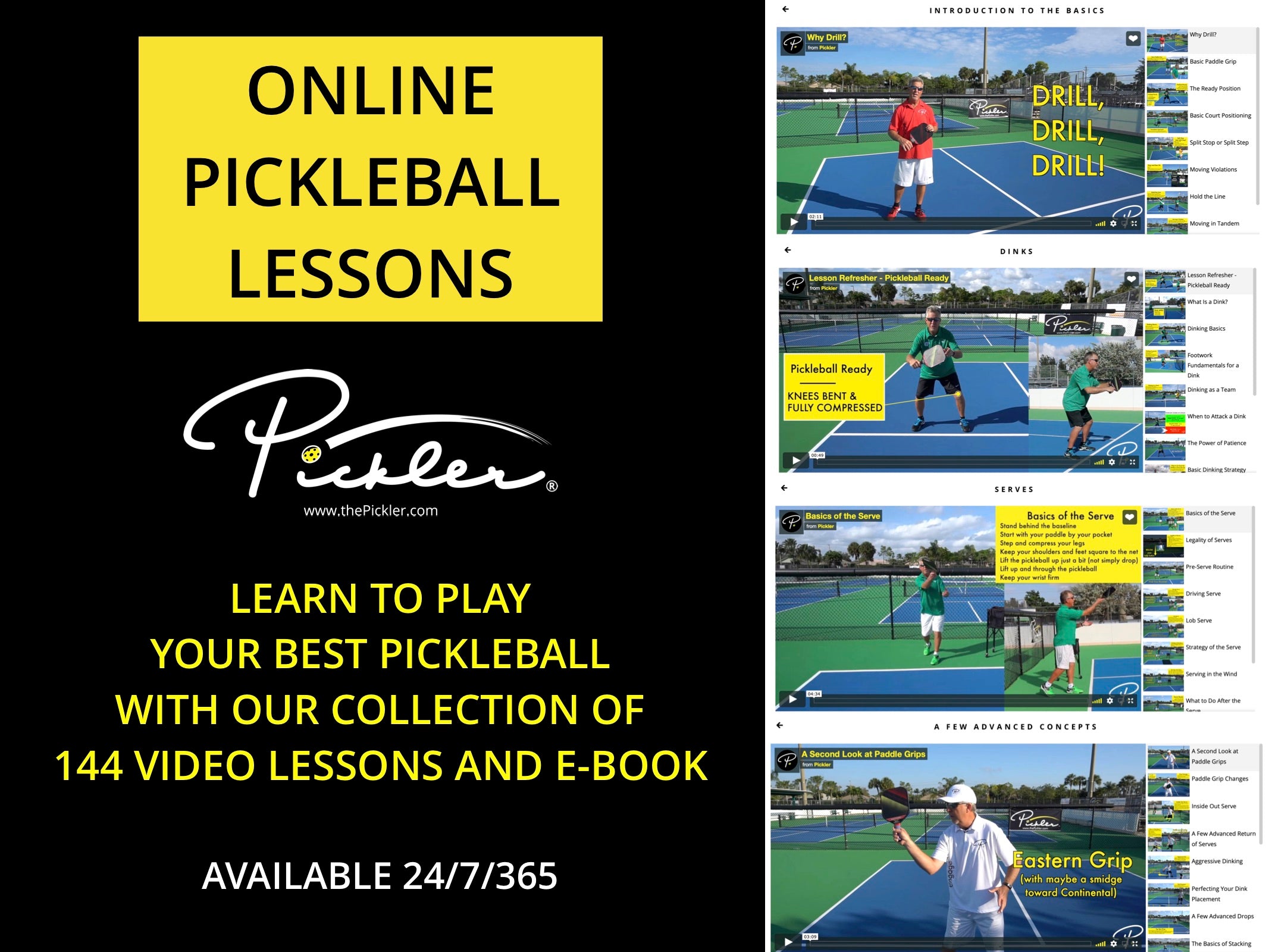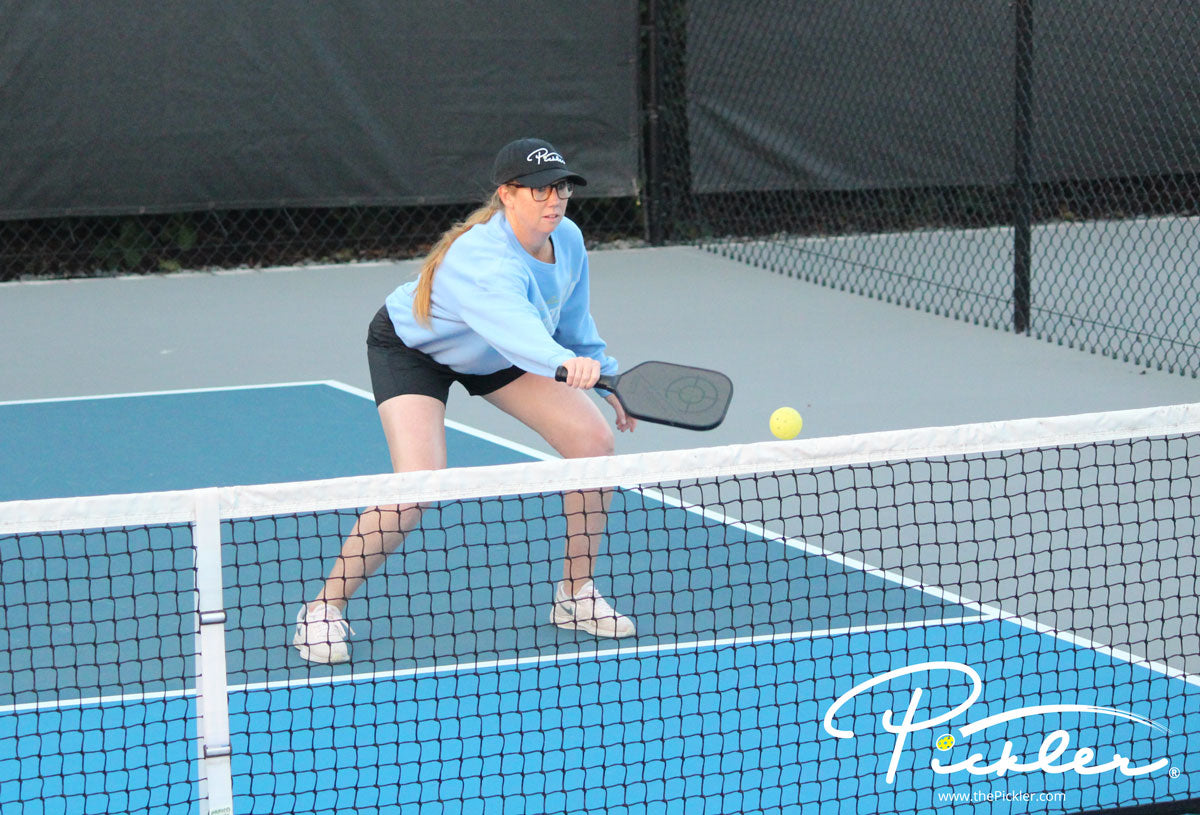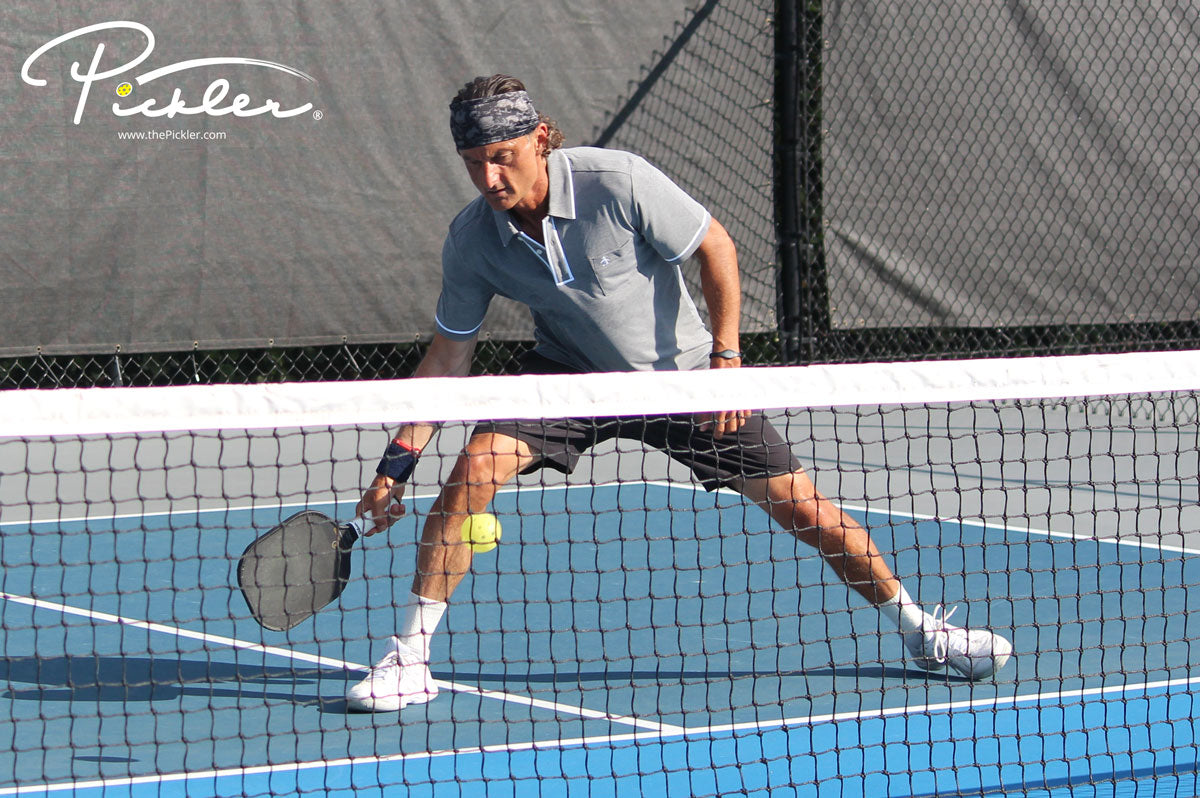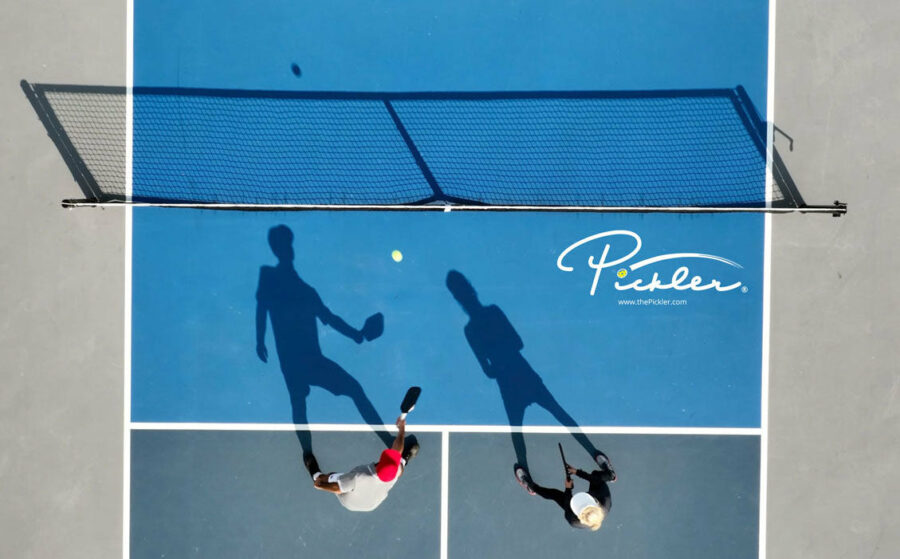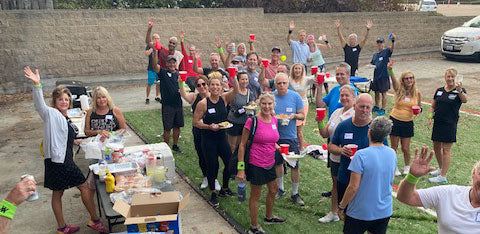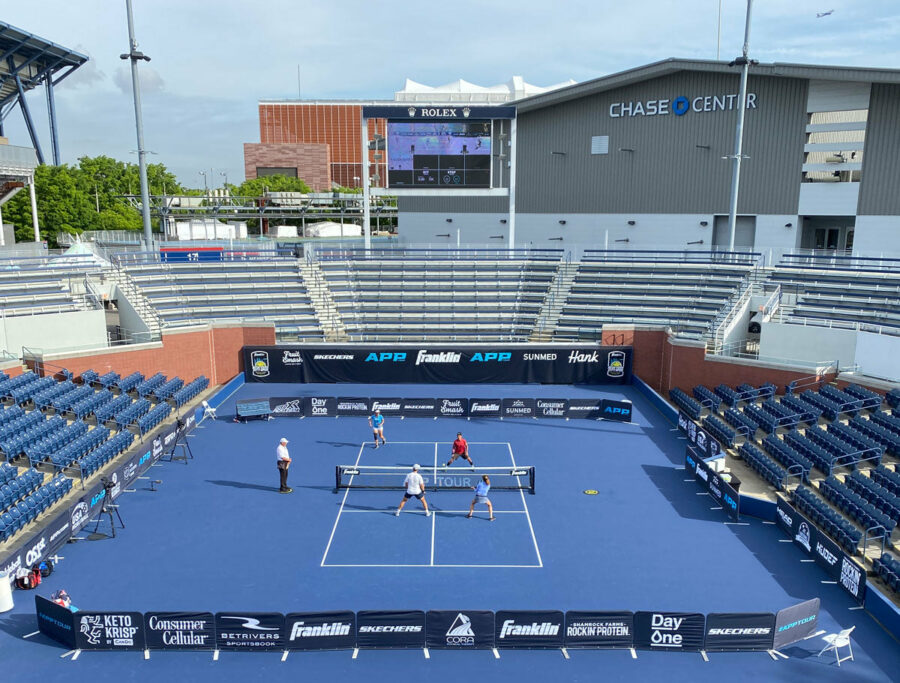On the pickleball court, there are typically three types of outcomes that end a point: (1) a winner; (2) an unforced error; and (3) a forced error. A winner is a shot that is untouchable before the second bounce (e.g., a passing shot). Winners are typically memorable shots—especially for the person that hit them. An unforced error is a returnable shot that is flubbed as a result of poor execution. A forced error, on the other hand, is a returnable shot that is flubbed as a result of good play by the opposing team.
A good strategy to win in pickleball is to reduce your unforced errors. Typically, the team that makes the least amount of unforced errors on the court will win the game. Unforced errors are completely within your control, as an unforced error is a result of your poor execution on the pickleball court.
However, at some point in the journey to develop their skills, pickleball players will be able to consistently get the pickleball back over the net and in between the lines of the court. In other words, pickleball players will consistently reduce or even eliminate their unforced errors. So, in order to win against these pickleball players, you need to turn to forced errors. You need to make your opponents make forced errors with good play yourself.
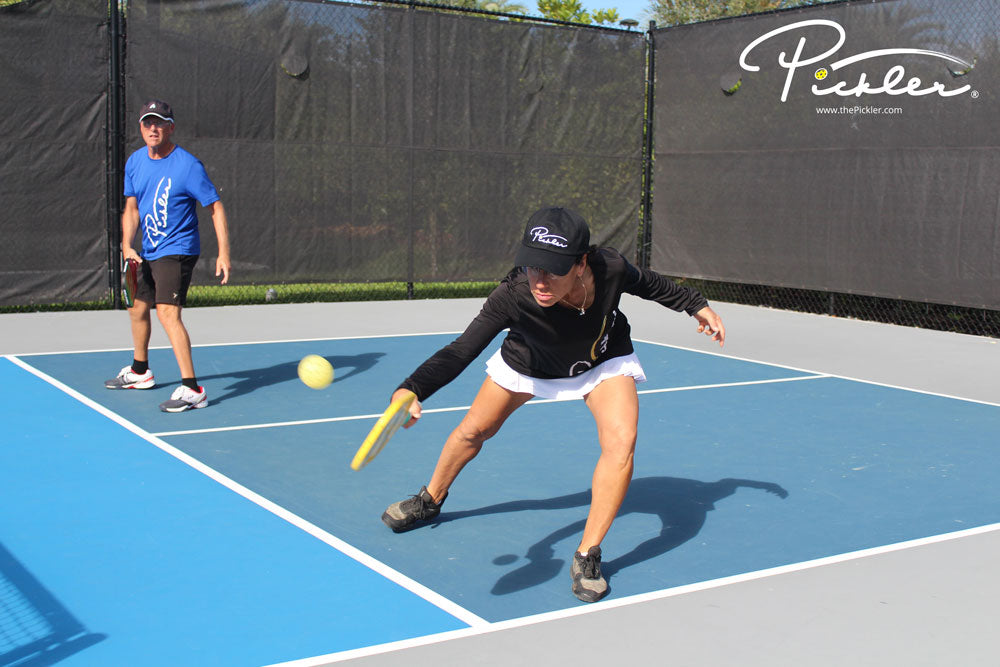
Now, before answering the question of how do you make your opponents make forced errors, it is important to note that forced errors should be the goal over hitting winners. Winners are exciting and obviously excellent shots to hit on the pickleball court because it leads to winning points. However, generally speaking, winners are high-risk, high-reward shots. In other words, winners are low percentage shots, which means that they could lead to unforced errors by you (and, as noted above, reducing and eliminating your unforced errors should be a foundational goal of your pickleball game in order to win). Rather than focusing on winners and playing low percentage pickleball, you should focus on forced errors. This is because forced errors are quality shots that balance playing aggressively and putting pressure on your opponents in order to win points, on one hand, with playing high percentage pickleball and reducing your unforced errors, on the other hand.
To make your opponents hit forced errors on the pickleball court, there are a variety of strategies that you can employ, which include:
- Speed – Increasing the pace of the pickleball can force your opponents to make errors, as they try to catch up to the fast speed of the ball. Further, changing speeds (e.g., sometimes fast, sometimes off-speed) is another way to frustrate your opponents into making forced errors.
- Spin – Using topspin, backspin, side spin, etc. (and mixing up these different spins) will cause your opponents to make forced errors.
- Placement – Placement is crucial in making your opponents move on the pickleball court. Making your opponents move – especially if you can make your opponents move while trying to hit the pickleball – will lead to forced errors.
- Take Time Away – Pickleball is a fast game with little time to react, since you are so close to your opponents on the court. To apply even more pressure, take time away from your opponents by always taking the pickleball out of the air and always holding the Kitchen line.
- Keep Back – Keep your opponents back. By keeping your opponents back, you will force them into errors, as they will have to work harder to get the pickleball back to your side of the court. Plus, you will create more room and more angles to possibly hit any winners.
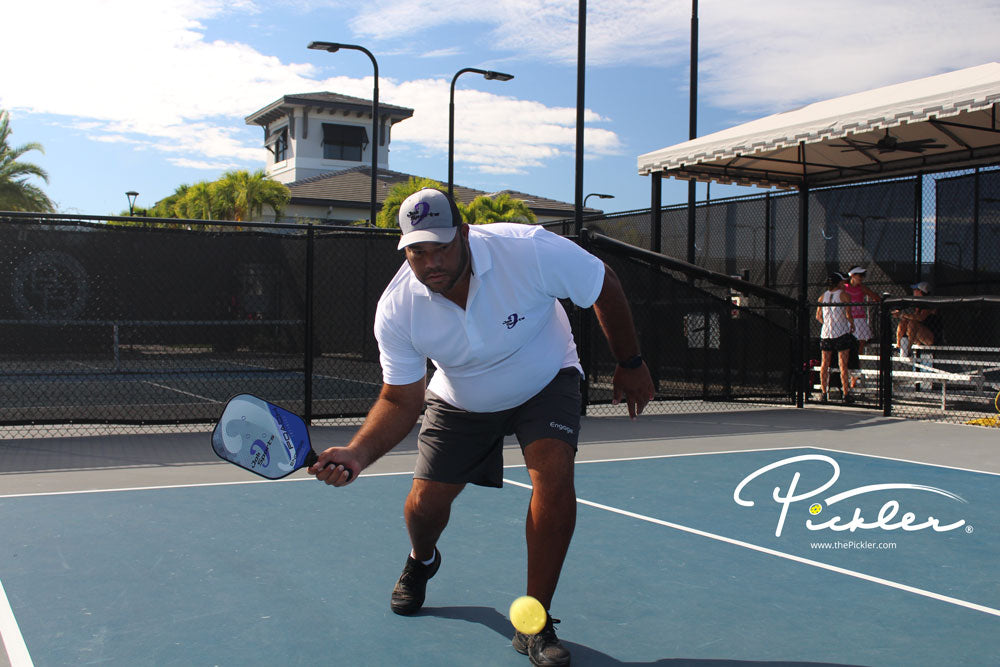
The Best Way to Make Your Opponents Make Forced Errors on the Pickleball Court
With that said, the number one way to make your opponents hit forced errors is to keep the pickleball down and to hit the pickleball down toward your opponents’ feet. A downward trajectory is key, as it will cause your opponents to hit up on the pickleball.
Whenever you can send the pickleball on a downward trajectory, you should. For instance, if you are able to hit a volley, try to hit with a downward trajectory (rather than a flat trajectory).
If you are forced to hit up on the pickleball, then it is important to keep the pickleball down or low (e.g., use a reset or a dink) to neutralize the point. This neutralizing shot by you should have the goal of requiring your opponent to have to hit up on the pickleball—whether by hitting another dink or by hitting another shot with an upward trajectory.
Hitting with a downward trajectory is the best way to cause your opponents to make forced errors. It is important to note that your downward trajectory may not directly result in a winning shot. However, by hitting with a downward trajectory, you will cause your opponent to hit with an upward trajectory. This will eventually lead to a high-enough ball for you to hit a winning overhead or other shot.
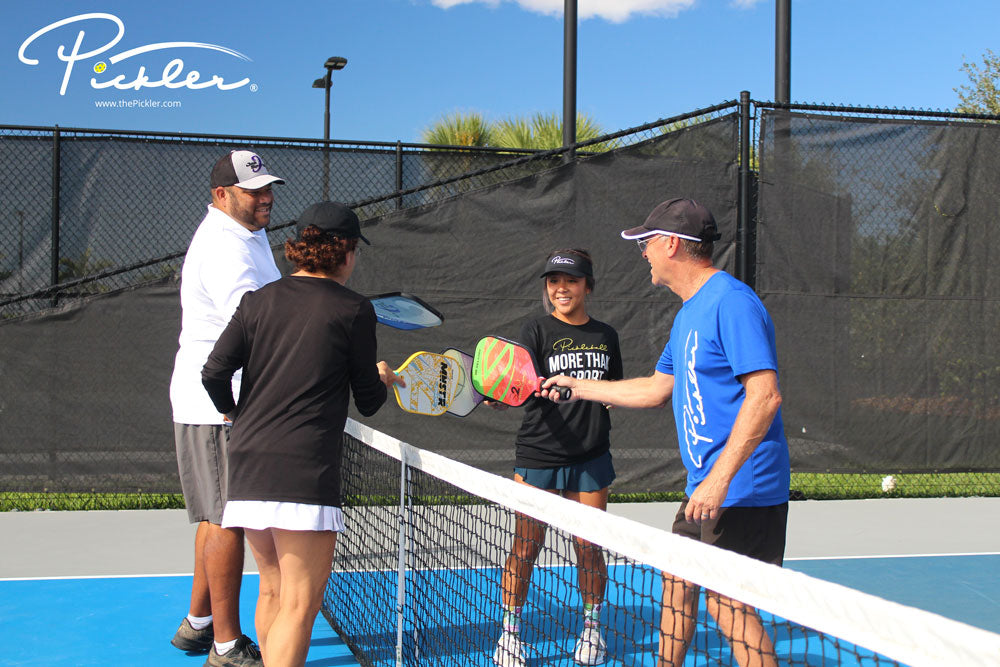
To summarize, your baseline (i.e. meaning foundational and not the baseline on the court) goal should be to reduce and even eliminate your unforced errors. However, at some point you and your opponents will reach that level of skill where you will not have any unforced errors. At that point, it is important to turn your attention to causing forced errors—to putting enough pressure on your opponents that you make them make errors. To do this, you have a number of tools in your toolkit—the best of which is to focus on hitting with a downward trajectory. Hit down, make your opponents hit up, cause more forced errors, and win more points on the pickleball court.
WANT MORE PICKLEBALL TIPS AND STRATEGIES?
Learn the #1 tip from the pro pickleball players!
Plus, if you want more pickleball tips and strategies on every aspect of your pickleball game, check out Pickler’s online video lesson collection called My Pro Pickleball Coach. My Pro Pickleball Coach is a fraction of the price of one clinic or even one lesson, and features over 140 video lessons (over 7 hours of instruction!), as well as a corresponding e-book. These online video lessons are available on demand 24/7 and breakdown every aspect of the sport of pickleball, including pickleball drills, strategy, and advanced concepts, so you will play your best pickleball.
